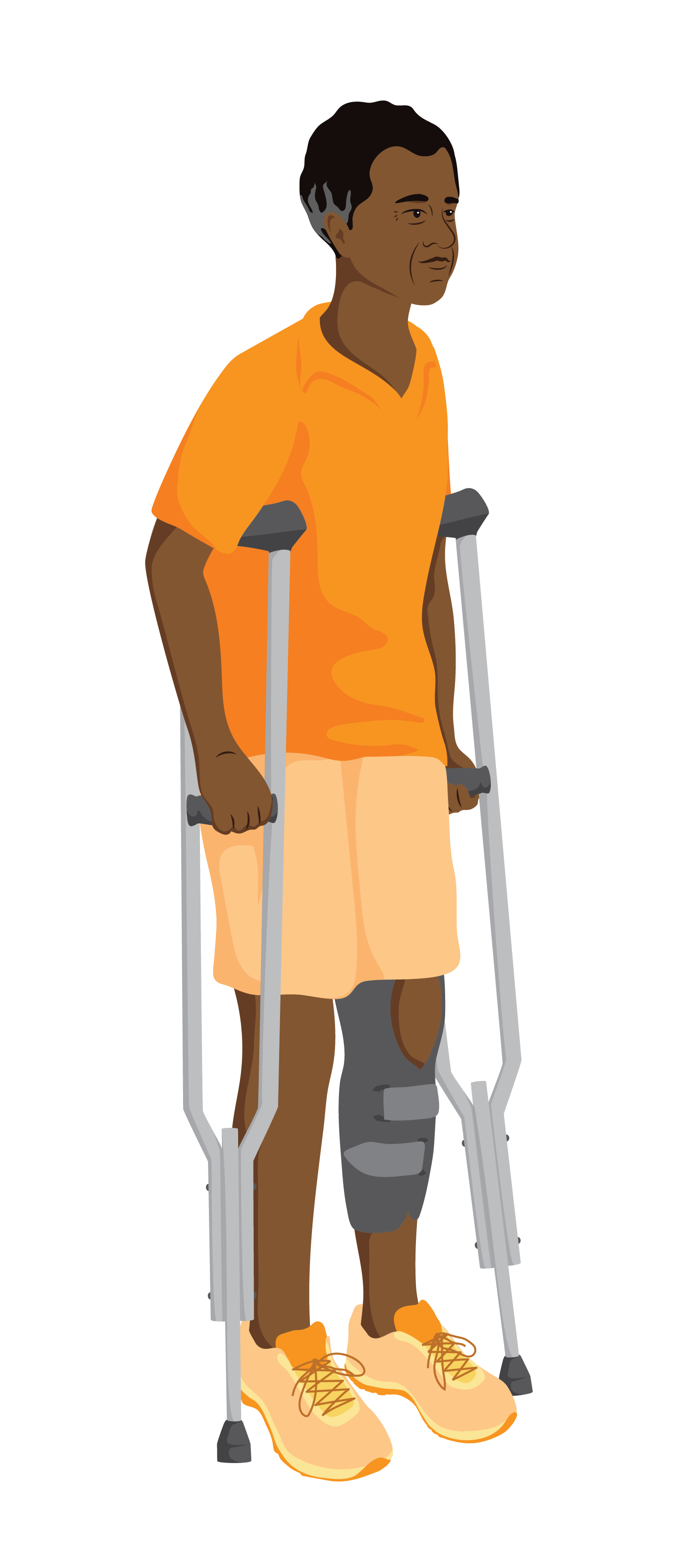4. Why is rehabilitation important?
Rehabilitation is important because it offers many benefits.
These include the following:
- Reduces, manages or prevents complications from health conditions such as of health conditions
- Improves the recovery and health outcomes after medical and surgical interventions
- Minimizes the disabling effects of health conditions
- Improves function, independence and participation in all aspects of life
- Reduces costs related to frequent hospitalizations, loss of employment, caregiving and long-term care
- Access to rehabilitation supports a person’s right to comprehensive healthcare. It also supports the rights of people with disabilities and other groups such as older people.
![]() Activity
Activity
Watch the video to find out how rehabilitation can support people in their daily lives
Rehabilitation is important for all, at any time irrespective of
- the age of the person – from young infants through to older people
- the phase of care - from acute to long-term phases
- the condition of the person – whether short term or disabling over the long-term
There are many health conditions that may benefit from rehabilitation, these include:
- Osteoarthritis
- Stroke
- Lower limb amputation
- Fractures / trauma-related injuries
- Diabetes
- Ischemic heart disease
- Low back pain
- Chronic obstructive pulmonary disease (COPD)
- Frail or old age
- Cerebral Palsy
- Decreased hearing
- Low vision
- Mental health conditions such as Schizophrenia
Young age

Meet Sai
Sai has cerebral palsy which affects his movement and speech. He has been receiving muscle strengthening and gait training exercises. He has also been taught how to use gestures, writing and a communication board to communicate while receiving speech training. Sai can now walk with the help of elbow crutches and ankle foot orthoses. He is able to attend and participate in school.
Old-age

Meet Luciana
Luciana is an elderly woman who has arthritis. Luciana does not always remember the things she needs to do. She also has difficulty getting to the toilet on time.
Luciana practices her range of motion exercises at home to keep her joints active and improve her mobility. She also has a paper pasted on her door which helps her to remember the things she needs to do. Luciana uses a toilet chair beside her bed for when she urgently needs to use the toilet and cannot get to it on time. Luciana practices her range of motion exercises at home to keep her joints active and improve her mobility. She also has a paper pasted on her door which helps her to remember the things she needs to do. Luciana uses a toilet chair beside her bed for when she urgently needs to use the toilet and cannot get to it on time.
Acute phase

Remember Hugo?
Hugo had surgery on his left knee. He has been practicing his muscle strengthening and walking exercises and can now walk without any assistive product. He has returned to all his activities prior the surgery.
Chronic phase

Meet Maria
Maria has multiple sclerosis, a long-term health condition. She does not have full control of her bladder and cannot fully move her legs. Maria practices her gentle muscle pumping exercises to prevent her legs from swelling and a blood clot from forming in her legs. Maria also has been taught how to manage the fluids she takes in and also uses absorbent cloths to prevent her clothes from getting wet with urine. This gives Maria the confidence to go out with her mother as she experiences urinary incontinence at times.
Health Condition

Meet Malik
Malik is a tailor who in recent years has not been able to see well. He has been told he has presbyopia. Malik follows the advice you gave at the local clinic and has improved the lightening around his work station and in his home.
He has also recently began using reading glasses. Malik can now continue working as a tailor.
You have completed Lesson one!
If you have any questions or comments, post them on the discussion forum.
